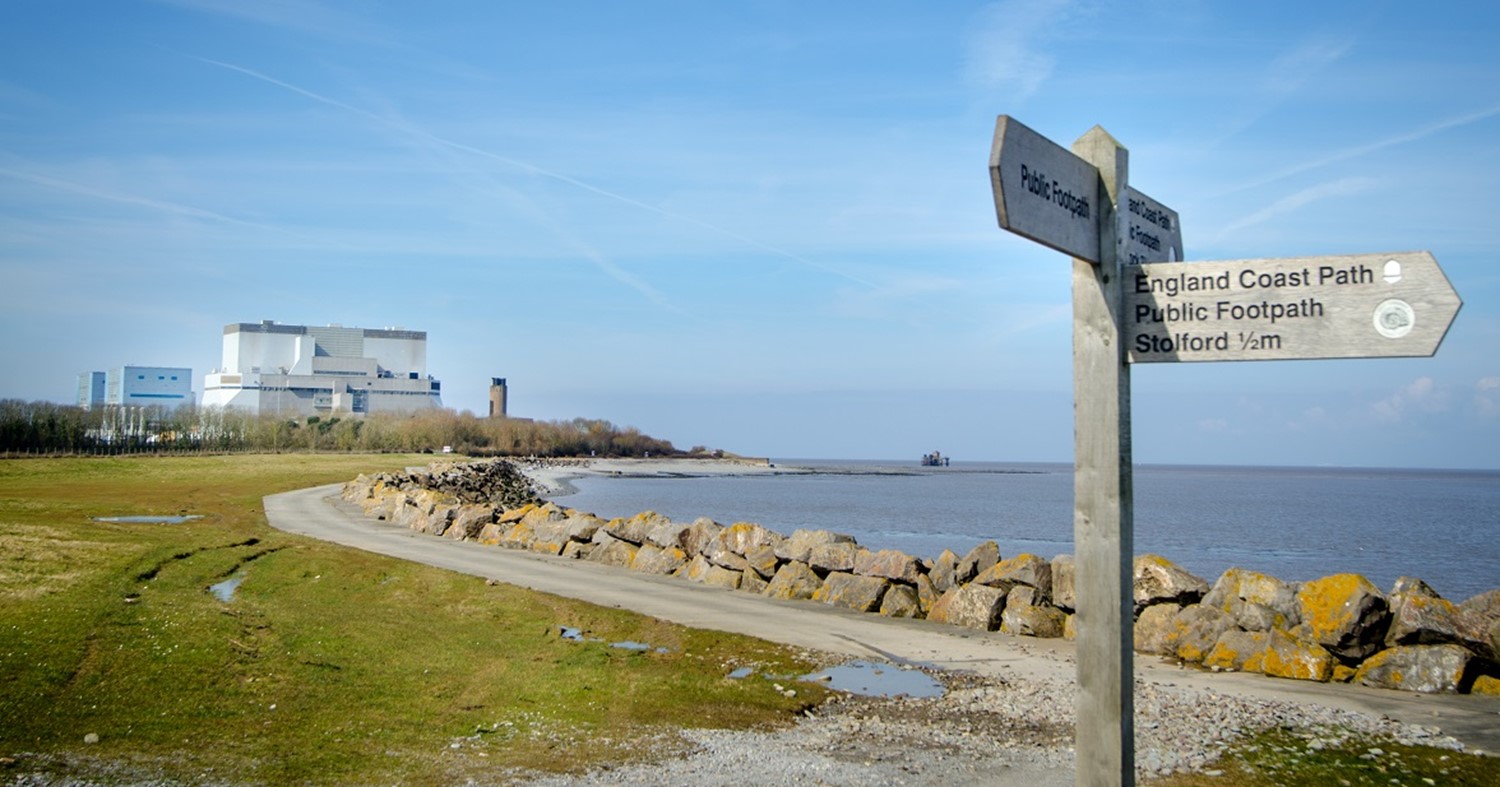Monticello nuclear power plant. (Photo: Xcel Energy)
The Minnesota Public Utilities Commission (PUC) has approved Xcel Energy’s request for a certificate of need to expand spent fuel storage at the utility’s Monticello nuclear power plant.
The additional storage, according to the PUC, requires installation of a second concrete support pad and modular concrete storage system designed to hold 14 additional steel canisters.
Xcel had requested increased outdoor storage to accommodate its plan to extend Monticello’s operational life by 10 years, to 2040.
Members of the Paragon Energy Solutions, Reuter-Stokes, and NuScale Power teams during a recent visit to Reuter-Stokes’ global headquarters in Twinsburg, Ohio. (Photo: Reuter-Stokes)
Paragon Energy Solutions and Reuter-Stokes have signed a contract to design and manufacture neutron monitoring detectors for small modular reactor developer NuScale Power.
The Diablo Canyon nuclear power plant.
Bowing at last to the unflagging efforts of nuclear advocates over the past few years—as well as to more recent pressure from a former nuclear opponent, Gov. Gavin Newsom—the California legislature late last night approved S.B. 846, a measure that provides the option of extending operations at the Diablo Canyon nuclear power plant for five years beyond its scheduled 2025 closure date.
Pacific Gas and Electric, Diablo Canyon’s owner and operator, had agreed in June 2016 to an early shuttering of the facility, following discussions with organized labor and environmental organizations. PG&E’s application to close the plant was approved by the California Public Utilities Commission in January 2018.
The bill passed easily through both legislative chambers: 67–3 in the General Assembly and 31–1 in the Senate.
EDF Energy’s Hinkley Point B nuclear power station, in Somerset, England. (Photo: EDF Energy)
By all accounts the most productive nuclear power plant in British history, Somerset’s Hinkley Point B station closed for good on August 1, with the shutdown of its B1 unit, a 485-MWe advanced gas-cooled reactor. (The plant’s B2 unit, a 480-MWe AGR, was shuttered early last month.)
The station employed around 500 staff and 250 contractors and contributed approximately £40 million (about $48.7 million) per year to the Somerset economy, according to EDF Energy, owner and operator of the United Kingdom’s power reactor fleet.
July 8, 2022, 7:00AMNuclear NewsBy George Apostolakis, James Ellis, and Steven Nesbit The Diablo Canyon nuclear power plant.
The state of California recently and quite sensibly cracked the door back open for continued operation of the Diablo Canyon nuclear power plant past the current operating license expiration dates in 2024 (Unit 1) and 2025 (Unit 2). The nonprofit North American Electric Reliability Corporation’s recently released 2022 Summer Reliability Assessment highlights the risk of electricity shortages in California. Given that concern, as well as the benefits of continued Diablo Canyon operation—including much needed clean, reliable energy; good jobs; and potential for large-scale production of fresh water—another look at the shutdown decision made several years ago is clearly warranted. Sen. Dianne Feinstein (D., Calif.) reinforced this point when she added her voice to the growing chorus of policymakers advocating extended operation for Diablo Canyon.
Kiyoun Na, chief executive officer of Doosan Enerbility’s nuclear business group; John Hopkins, president and CEO of NuScale Power; Yongsoo Huh, president and CEO of GS Energy; and Byung Soo Lee, executive vice president of Samsung C&T, signed an MOU to collaborate on NuScale SMR deployment in Asia.
Small modular reactor developer NuScale Power has signed a memorandum of understanding with three South Korean companies—Doosan Enerbility Company, GS Energy Corporation, and Samsung C&T Corporation—to explore the deployment of NuScale’s VOYGR power plants in Asia.
Europeans are taking resolute steps to reduce their output of climate-changing gases, but some countries are moving in the wrong direction.
Europeans are taking resolute steps to reduce their output of climate-changing gases, but some countries are moving in the wrong direction.
Many countries are adding solar and wind, which are low-carbon energy sources. Some have moved to biomass, the value of which as a climate cure is not clear. A few are adding reactors, while others are defining nuclear as dirty energy and natural gas as “clean” and are changing their generation mix accordingly.
The Diablo Canyon nuclear power plant
The San Luis Obispo County Board of Supervisors earlier this week endorsed extending the life of Diablo Canyon—California’s last operating nuclear power facility—which owner and operator Pacific Gas and Electric Company has scheduled for permanent closure in 2025. The two-unit, 2,289-MWe plant is located in San Luis Obispo County, near Avila Beach.
Nine Mile Point (Photo: Constellation Energy)
Exelon Generation has received a grant from the Department of Energy to explore the potential benefits of on-site hydrogen production and has chosen its Nine Mile Point nuclear power plant as the demonstration site, the company announced on Wednesday. (In 2019, Exelon received a conditional commitment from the DOE to co-fund a hydrogen electrolyzer demonstration at a nuclear plant.) Located in Scriba, N.Y., Nine Mile Point consists of two boiling water reactors—the 620-MWe Unit 1 and the 1,287-MWe Unit 2.
The Surry nuclear power plant, near Surry, Va. Photo: Dominion Energy
The Nuclear Regulatory Commission has approved Dominion Energy’s application to renew the Surry nuclear power plant’s operating licenses for an additional 20 years. The renewed licenses authorize the extension of reactor operation at the two-unit plant from 60 to 80 years.
Indian Point-3’s turbine hall and generator. Photo: Entergy
The disturbingly long list of U.S. nuclear plants prematurely closed in recent years will get even longer tonight when the last reactor at the Indian Point Energy Center, Unit 3, powers down for the final time. The shutdown, scheduled for 11 p.m. local time, will mark the end of nearly 60 years of zero-carbon electricity generation at the Buchanan, N.Y., facility.












 The U.K. government last week announced the release of its
The U.K. government last week announced the release of its 
 Carbon dioxide emissions from the U.S. power sector fell 10 percent between 2019 and 2020, according to the 17th and latest edition of
Carbon dioxide emissions from the U.S. power sector fell 10 percent between 2019 and 2020, according to the 17th and latest edition of  Among the 12 energy-mix scenarios analyzed in
Among the 12 energy-mix scenarios analyzed in 
